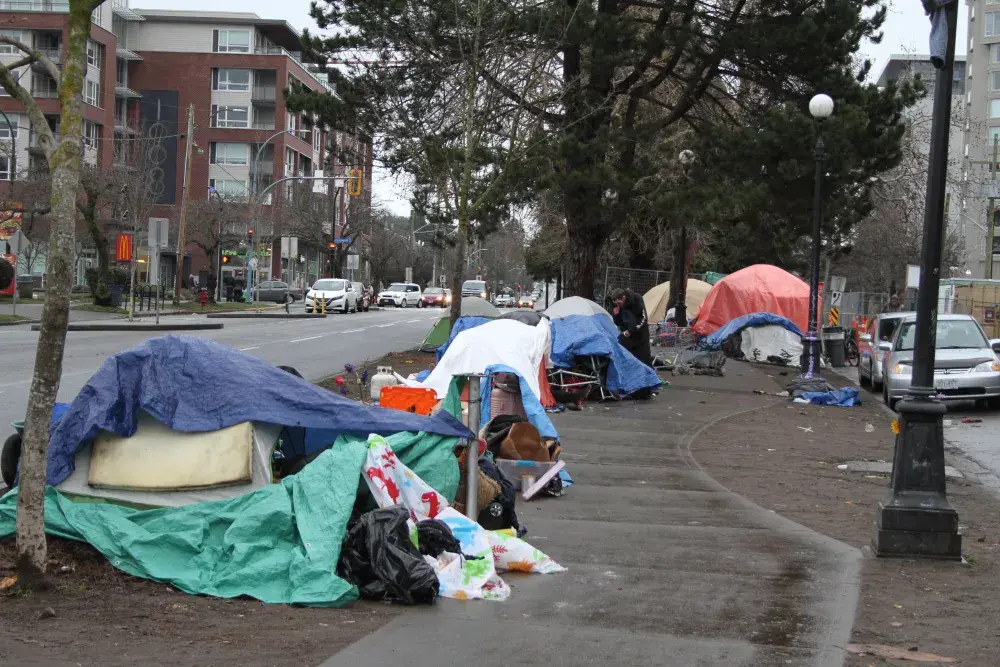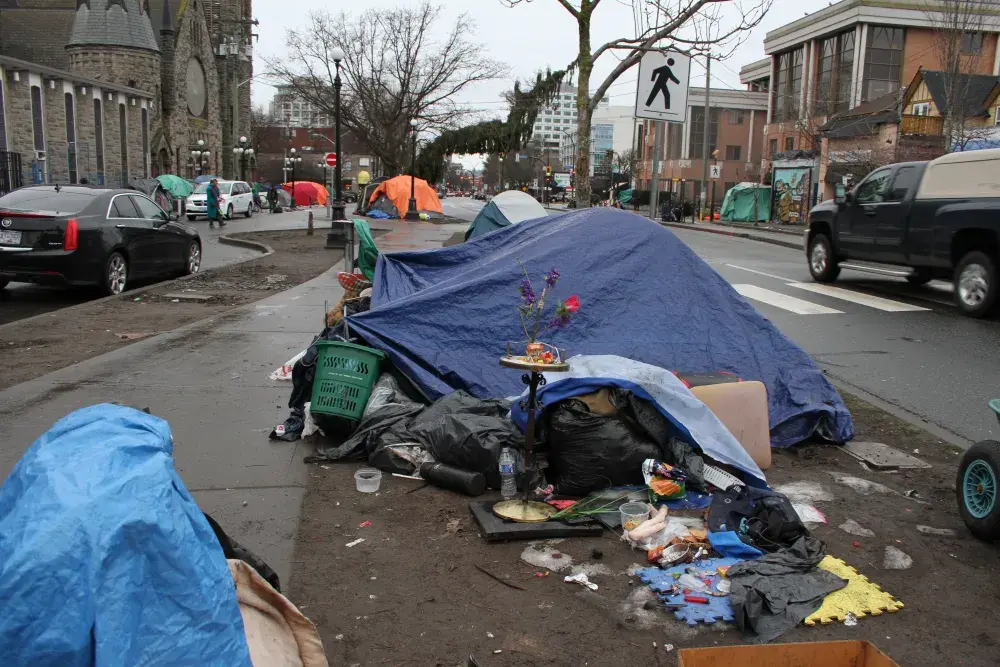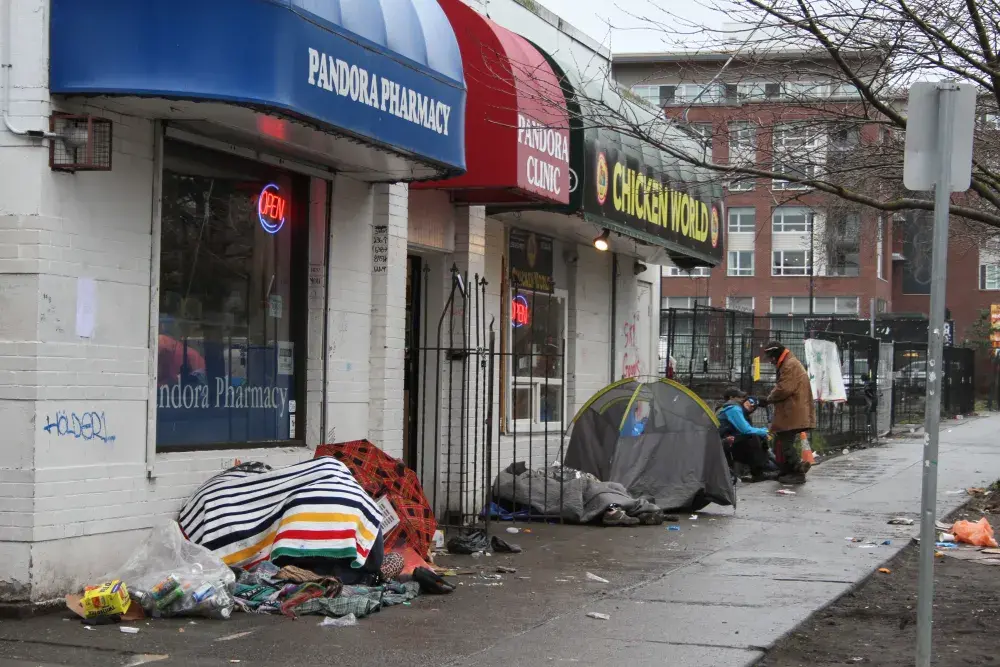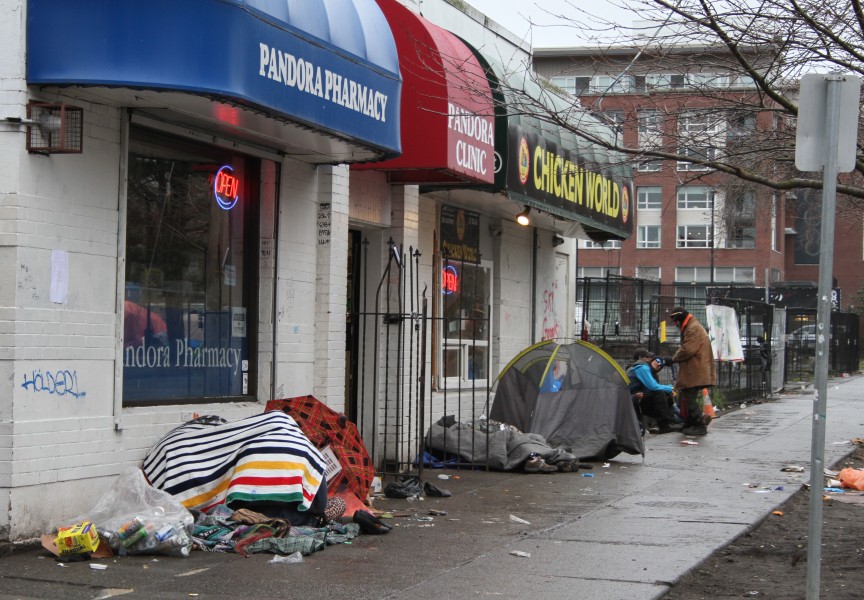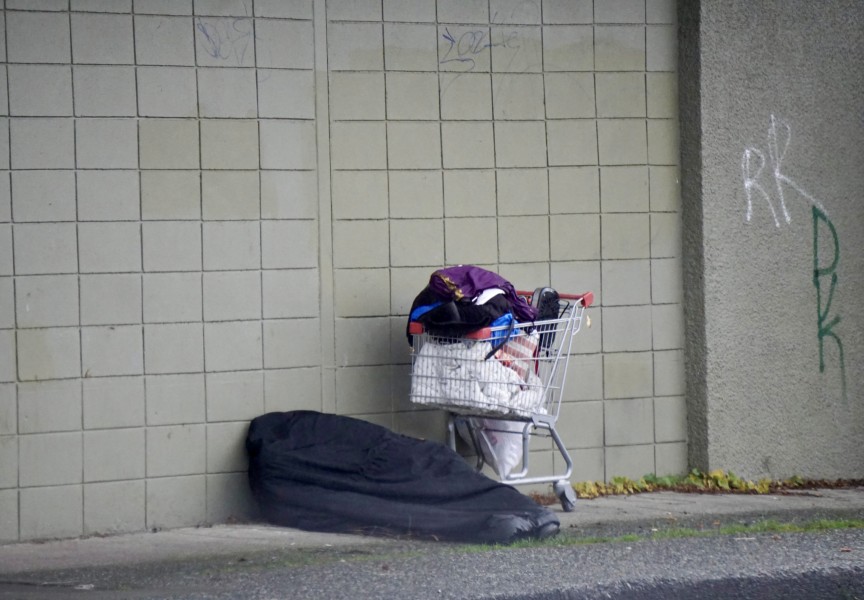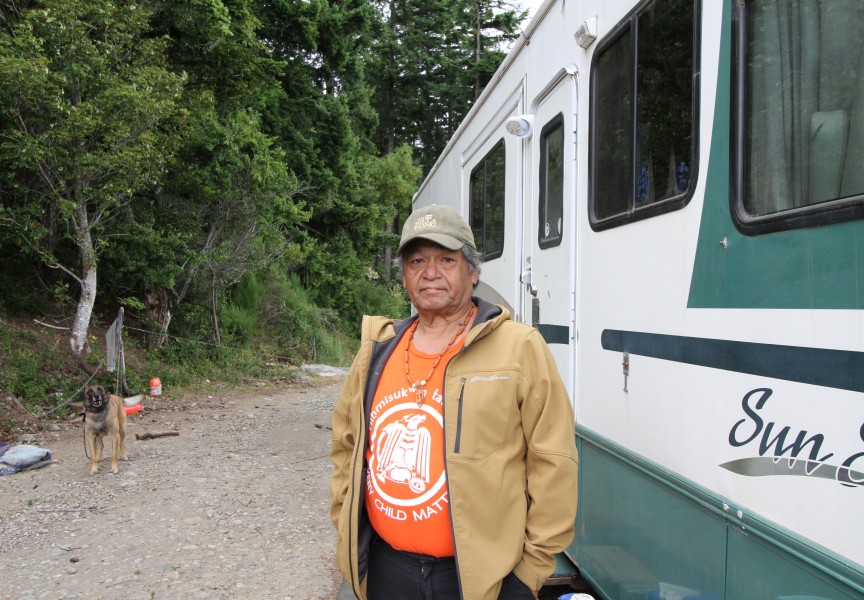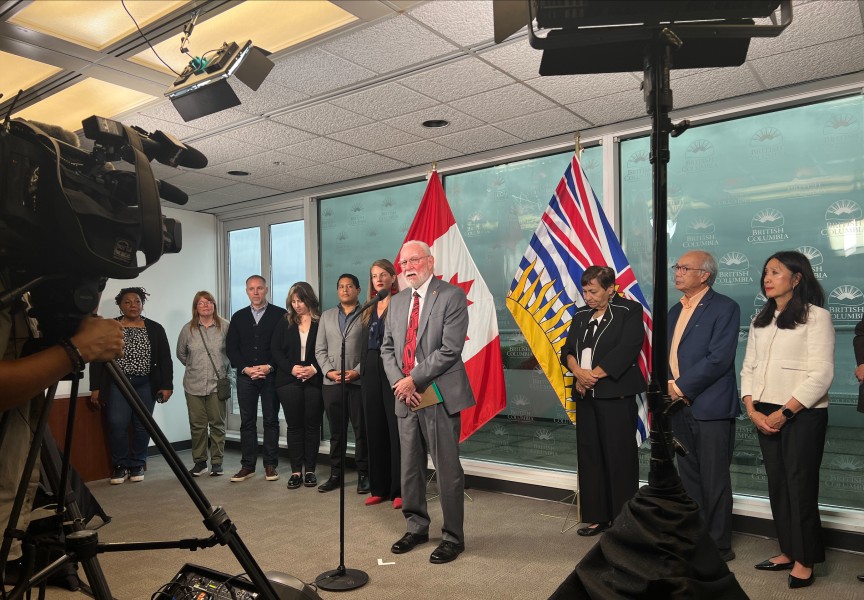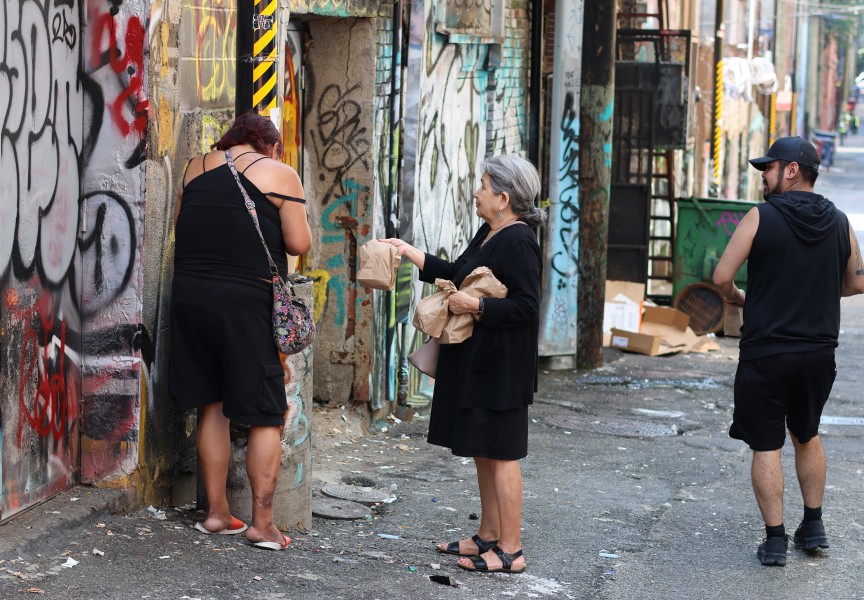The 2025 Point-in-Time (PiT) Count shows shifting rates of homelessness across Vancouver Island, particularly in Campbell River, Port Alberni, and Nanaimo, three cities where Indigenous people continue to be overrepresented among the unhoused.
Conducted across 20 communities, the count found homelessness decreased in eight and increased in 12 compared to 2023. The surveys for Campbell River and Port Alberni were conducted on April 30, 2025, with funding from BC Housing, while Nanaimo’s report followed on July 21 under the federal Reaching Home program.
The PiT Count captures a 24-hour snapshot of people experiencing homelessness, recording demographics, service use, and causes of housing loss. A person is considered homeless if they have no stable place of their own, pay no rent, and cannot expect to stay in one place for at least 30 days.
In Campbell River, 174 people were experiencing homelessness, a decrease from the 197 counted in 2023. Of these, 49 were sheltered and 125 unsheltered, with 29 per cent of the latter staying temporarily with someone.
Port Alberni counted 180 individuals, rising from 163 in 2023. Seventy-three were sheltered and 107 unsheltered, with 21 per cent of the unsheltered staying with someone.
In Nanaimo, the count rose to 621 from 515 in 2023. A total of 154 were sheltered and 427 unsheltered, reflecting the city’s limited emergency and shelter spaces.
Sheltered individuals refer to those who spend the night in a shelter, transition house, youth safe house, or institutional setting such as a hospital, jail, or detox facility. Unsheltered includes individuals sleeping outdoors, in vehicles, or temporarily staying with others.
In Campbell River, 19 per cent of participants were youth (under 25), 55 per cent adults (25–54), and 25 per cent seniors (55+). Gender identities were 58 percent male, 40 per cent female, and 2 per cent another gender.
Port Alberni reported 12 per cent youth, 67 per cent adults, and 21 per cent seniors, with 49 per cent male, 51 per cent female, and three per cent identifying as another gender.
In Nanaimo, eight per cent were youth, 60 per cent adults, and 23 per cent seniors. Seventy per cent identified as male and 30 per cent as female.
Indigenous people and former children in care continue to be over-represented in the counts. In 2025, Indigenous-led approaches were introduced to make the process culturally safe, trauma-informed, and more effective at including those often missed in traditional counts.
In Campbell River, 58 per cent of those counted identified as Indigenous, 82 per cent being First Nations with the rest from the Métis community.
Port Alberni had 49 per cent Indigenous participants, an overrrepresentation considering that 15 per cent of the Census population is Aboriginal. Ninety 90 per cent of these respondents were First Nations, the rest being Métis and Inuit. This shows a decline in the proportion of Indigenous respondents from the 2023 count, when 66 per cent of those counted identified as Aboriginal.
In Nanaimo 163 were identified as Indigenous, representing a quarter of the homeless population, with 75 per cent of these respondents being First Nations.
In Campbell River, the main reasons for homelessness were insufficient income (36 per cent), substance use (17 per cent), and landlord/tenant conflict (17 per cent). Health challenges included medical conditions (45 per cent), physical disability (36 per cent), mental health issues (71 per cent), addiction (72 per cent), and learning disabilities (38 per cent).
Port Alberni reported insufficient income (32 per cent), substance abuse (24 per cent), and unsafe housing conditions (17 per cent) as the top causes. Health challenges included medical conditions (47 per cent), physical disability (24 per cent), mental health issues (75 per cent), and addiction (79 per cent).
In Nanaimo, insufficient income (48 per cent), substance abuse (25 per cent), and unsafe housing conditions (14 per cent) were the leading causes. Health challenges included medical conditions (15 per cent), physical disability (13 per cent), mental health issues (20 per cent), addiction (22 per cent), and learning disabilities (eight per cent).
“[Shelters are] helpful, but it's a band-aid,” said Fran Hunt-Jinnouchi, CEO of the Aboriginal Coalition to End Homelessness Society (ACEH). “If you look at how shelters are structured . . . people line up, they go in, they have to leave early in the morning. So the time that we have to actually connect with them, provide services, and get a sense of their needs, we lose it because . . . they have to [get] out. We have to reimagine shelters and develop a model that leads to housing sustainability, not only addressing the immediate need, although those are important.”
Since 2017, nearly 93,600 homes have been delivered or are underway in British Columbia, including more than 9,600 supportive homes for people experiencing homelessness, with 6,200 in Greater Victoria and 1,400 in Saanich.
“Housing . . . is important, but that is only the first step,” said Hunt-Jinnouchi. “[Housing gives] us the place to connect [and] determine how we can support [people] physically, emotionally, mentally, and spiritually, which is often the missing piece in services that are available.”
ACEH is developing a 10-year housing strategy for Vancouver Island and is meeting with First Nations and Indigenous organizations to share knowledge. The group is also developing a wellness house. This recovery centre helps individuals transition to independent market housing through education, life skills, and job training, working with the city’s highest at-risk and most vulnerable.
They are running a three-year pilot project in Victoria, Courtenay, and Port Hardy, where approximately 200 individuals and families have been housed, achieving a 90.4 per cent housing sustainability rate. The organization also operates 21 units of women’s housing, including the House of Courage, which features a floor dedicated to the Indigenous Alcohol Harm Reduction Residence Program, and the Sacred Cradle House, which supports Indigenous women and girls who wish to remain with their children while continuing their recovery journey.
“[Our model] has two pillars: culturally supportive housing and [decolonized] harm reduction,” Hunt-Jinnouchi explained. “[It’s] deeply rooted in land-based healing [and focuses] on creating pathways for healing and recovery. Our goal is to influence policy change at the highest levels to address systemic barriers. If we don’t address the system [or policies] that don’t support Indigenous-led solutions, we [won’t] move forward.”

